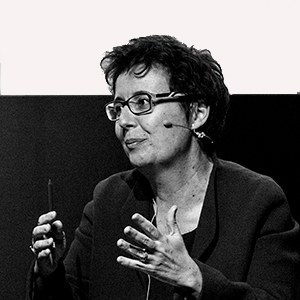Confined in the City
The advantages of the planned city in the time of coronavirus
The advantages of the planned city in the time of coronavirus
Urbanism, as we know it today, is the result of the fight against the urban living conditions prevalent in the mid-19th century. These conditions had created the perfect breeding ground for the emergence of infectious diseases and subsequently, the premature death of a great many people; a situation that put rapidly expanding industrial capitalism at risk.
The working classes lived in deplorable conditions, comparable to modern-day slums and favelas, and this led to an unsustainable loss of labor. Hygienic urbanism—Ildefons Cerdà is one of the key figures—emerged to plan and organize the construction of the city with the aims of avoiding social revolts, mitigating the growing inequalities, and striving for a universal standard for quality of life, with a certain dose of utopia. This is history—roughly outlined—and it is a lesson to be remembered and recovered, but we must not fall into the trap of drawing a direct parallel to the current situation.
The living conditions of the “planned” cities of the western world where we are confined today, have not been the cause of this disease, nor of its spread. The origin is still uncertain and its spread is related to the structure of the globalized world.
Until we reached practically global levels of confinement, the number of people traveling and moving around the planet daily was still in the millions. This explains why it could jump directly from China to Italy and onward, crossing oceans. Therefore, the baseline is different to that of the 19th-century city.
In fact, the urban conditions of these planned cities have great advantages to manage the effects of such situations and it is worth acknowledging these positive aspects.
The density of people and their proximity, without jeopardizing the necessary confinement, promote solidarity and care for the community. They also facilitate food supply and waste management, and allow access to certain services that are decisive in the fight against the pandemic—and in particular against this virus—such as access to running water to maintain essential hygiene, and for the majority, access to the Internet, which has proven so necessary to keep the population informed, entertained and connected.
From all of this, we can extract the following points for reflection, at the level of both urbanism and the city:
- The importance and simultaneously the difficulty of making individual confinement compatible with density. Examples include: the complementary relationships between hospitals and large facilities such as sports centers and the importance of their physical proximity; the ability to adapt temporary accommodation typologies (hotels and other dwellings primarily intended for tourism) to increase the capacity for isolation; the value of local food outlets, which form a network that provides greater coverage in comparison to centralized shopping center models; or the capacity to have basic services within walking distance to facilitate access to food, medicine and other necessities.
- Among the basic services (defined by law) for a site to be buildable—access to drinking water, sanitation, electricity and public roads—we must add access to telecommunications; a service that allows so many people to avoid isolation, old and young. To fight against social inequalities, the digital gap is one of the most important to overcome.
- Homes should be rethought in size and distribution, making them more “adaptable” and recovering multipurpose spaces that can be compartmentalized. We will need to pay greater attention to the relationship between interior and exterior spaces—balconies, windows, galleries and other elements—that have been forgotten for aesthetic reasons (the impact of modernity) and economic (the weight of financial benefit). More flexible, less constrained designs will be required.

Market day, Port de la Selva, Spain. Photo © Maria Buhigas

Diversity and urban mix, Lausanne, Switzerland. Photo © Maria Buhigas
- We have to start thinking seriously about a return to normality without increasing the levels of noise and air pollution in our cities. When the directives for the Low Emission Zone in the metropolitan area of Barcelona were approved a few months ago, we said that to reduce emissions to the levels recommended by the WHO, we should reduce our daily activity (the pulse of the city) to that of a Sunday. Currently, we are on a permanent Sunday, but when normality is restored, we need to do so “with zero emissions.” Is this possible? How? What implications will it have?
- We have an opportunity to rethink what model of tourism we want to recover. It is one of the sectors most affected by this crisis and at the same time it is the sector that has most stressed our cities in recent times: in housing, in the overcrowding and environmental deterioration of some places, in wage inequalities (this sector presents one of the most pronounced wage gaps), etc. But at the same time it shoulders a portion of GDP that cannot be underestimated and therefore we must consider carefully how to reinvent it.
- We must recognize the interdependence between the countryside and the city, and therefore the discourse of this dichotomy must be overcome by a systemic vision. In these moments of confinement, food supply (and in particular fresh food), is a fundamental service not only for health and well-being, but also for cohesion, security and social peace. Without a new urban/rural discourse we will not be able to advance toward a more just, equitable and sustainable future.
To sum up, let us recognize the value of the built city where we are confined today, correctly identify the enemies of urban life—which are not density or proximity—and let us reclaim urban planning as a tool for the positive transformation of our living conditions.
Main image: Density and compactness, Barcelona, Spain. Photo © Maria Buhigas
